Rank Species | Genus Cleyera Higher classification Cleyera | |
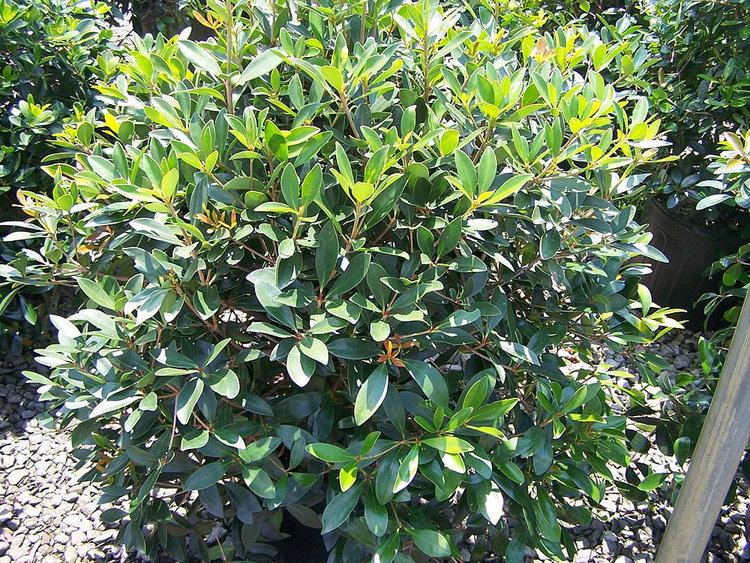 | ||
Similar Eurya japonica, Illicium anisatum, Cleyera, Theaceae, Eurya | ||
Cleyera japonica (sakaki) is a flowering evergreen tree native to warm areas of Japan, Taiwan, China, Myanmar, Nepal, and northern India. It can reach a height of 10 m. The leaves are 6–10 cm long, smooth, oval, leathery, shiny and dark green above, yellowish-green below, with deep furrows for the leaf stem. The bark is dark reddish brown and smooth. The small, scented, cream-white flowers open in early summer, and are followed later by berries which start red and turn black when ripe. Sakaki is one of the common trees in the second layer of the evergreen oak forests. It is considered sacred to Japanese Shintō faith, and is one of the classical offerings at Shintō shrines.
Contents

Cleyera japonica i
Uses

Sakaki wood is used for making utensils (especially combs), building materials, and fuel. It is commonly planted in gardens, parks, and shrines.
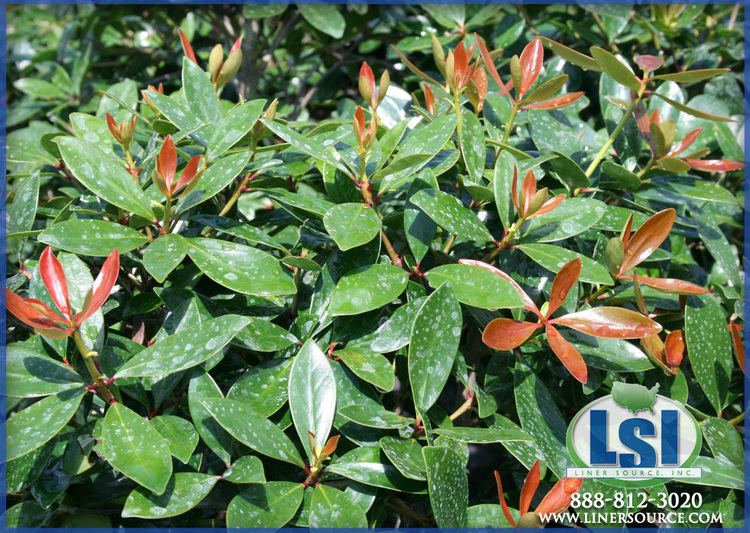
Sakaki is considered a sacred tree in the Shinto religion, along with other evergreens such as hinoki (檜 "Japanese cypress"), and kansugi (神杉 "sacred cryptomeria"). Shinto shrines are traditionally encircled with Shinboku 神木 "sacred trees". In Shinto ritual offerings to the kami 神 "gods; spirits", branches of sakaki are decorated with (shide) paper streamers to make tamagushi.
Linguistic background
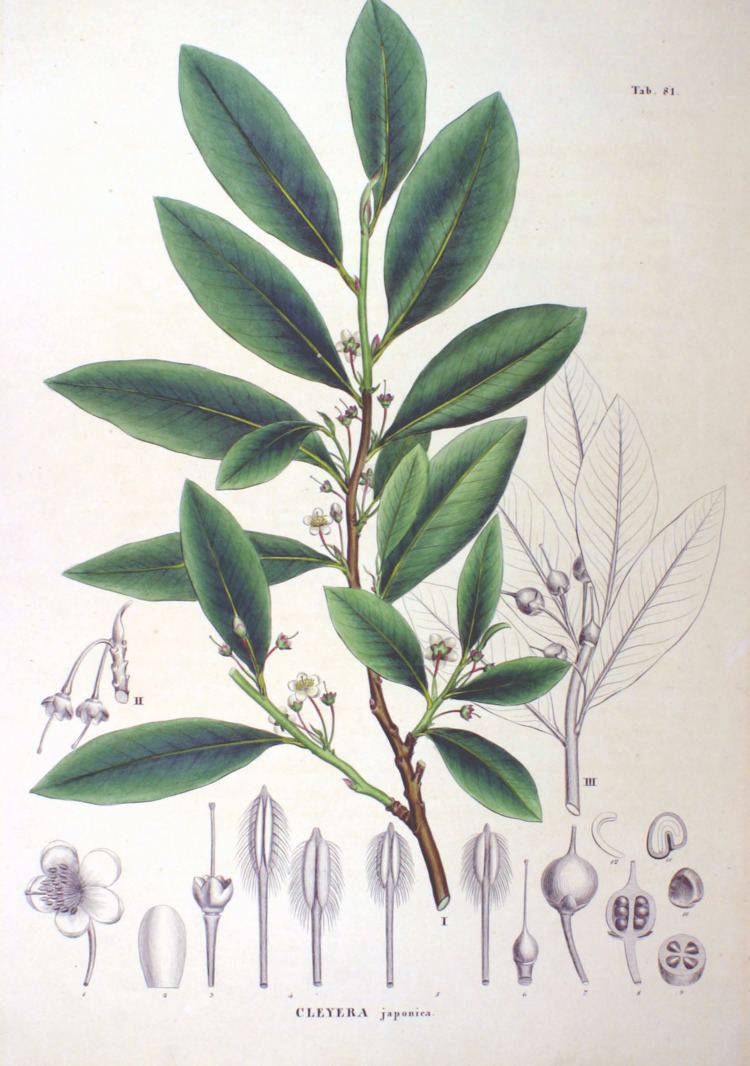
The Japanese word sakaki is written 榊 with a kanji character that combines ki 木 "tree; wood" and kami 神 "spirit; god", depicting "sacred tree; divine tree". The lexicographer Michael Carr notes,
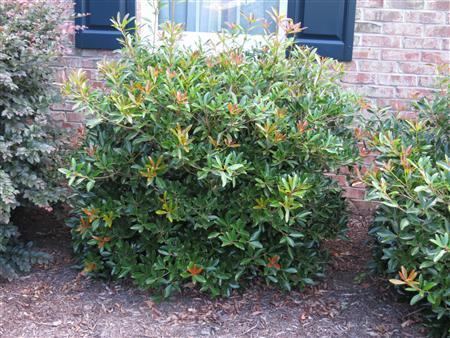
In modern Japanese, sakaki is written 榊 with a doubly exceptional logograph. It is an ideograph (in the proper sense of 'logograph representing an idea' rather than loosely 'Chinese character; logograph') and is a kokuji 国字 'Japanese [not Chinese] logograph.' Ideograms and kokuji are two of the rarest logographic types, each constituting a small percentage of a typical written Japanese sample. First, the idea of sakaki is expressed with a melding of boku or ki 木 'tree' and shin or kami 神 'god; divine, sacred' [of Shinto 神道]; comparable to a graphic fusion of the word shinboku 神木 'sacred tree.' Second, the sakaki 榊 ideograph is a kokuji 'national [i.e., Japanese] logograph' rather than a usual kanji 漢字 'Chinese logograph' borrowing. Kokuji often denote Japanese plants and animals not native to China, and thus not normally written with Chinese logographs. (1995:11)
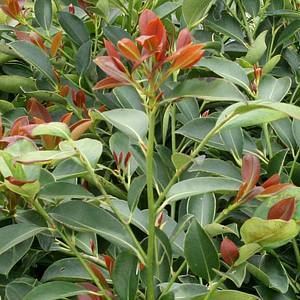
Sakaki 榊 first appears in the (12th century) Konjaku Monogatarishū, but two 8th-century transcriptions are 賢木 "sage tree" (Kojiki, tr. Chamberlain 1981:64 "pulling up by pulling its roots a true cleyera japonica with five hundred [branches] from the Heavenly Mount Kagu") and 坂木 "slope tree" (Nihon Shoki, tr. Aston 1896:42–43, "True Sakaki tree of the Heavenly Mt. Kagu"). Sakaki 賢木 or 榊 is the title of Chapter 10 in The Tale of Genji (ca. 1021). It comes from this context.
"May I at least come up to the veranda?" he asked, starting up the stairs. The evening moon burst forth and the figure she saw in its light was handsome beyond describing. Not wishing to apologize for all the weeks of neglect, he pushed a branch of the sacred tree in under the blinds. "With heart unchanging as this evergreen, This sacred tree, I enter the sacred gate." She replied: "You err with your sacred tree and sacred gate. No beckoning cedars stand before my house." And he: "Thinking to find you here with the holy maidens, I followed the scent of the leaf of the sacred tree." Though the scene did not encourage familiarity, he made bold to lean inside the blinds. (tr. Seidensticker 1976:187)
The etymology of sakaki 榊 is uncertain. With linguistic consensus that the -ki suffix denotes 木 "tree", the two most probable etymologies are either sakae-ki "evergreen tree" (from sakae 栄え "flourishing; luxuriant; prosperous") or saka-ki "boundary tree" (from saka 境 "boundary; border", an older form of modern reading sakai, from the way that trees were often planted at a shrine's boundary line). Carr (1995:13) cites Japanese tradition and historical phonology to support the latter etymon. The Shogakukan Kokugo Dai Jiten Dictionary entry for this term also notes that the pitch accent for 栄ゆ (sakayu, the origin of modern 栄え sakae) is different than what would be expected, suggesting that 境木 (saka-ki, "boundary tree") may be the more likely derivation.
